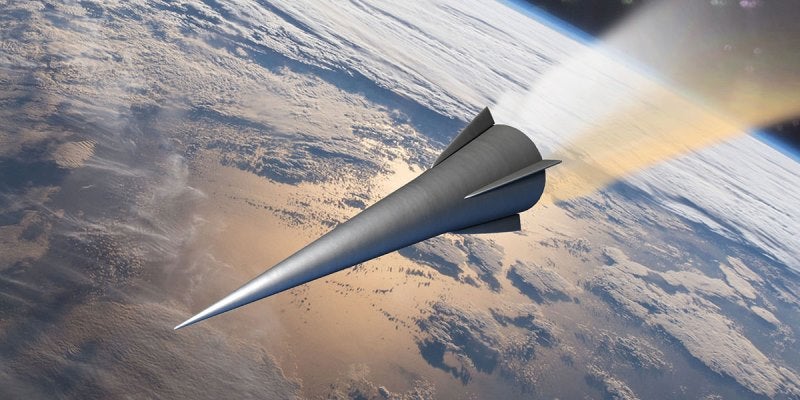
The US Army has awarded a contract to General Atomics Electromagnetic Systems (GA-EMS) to continue to develop hypersonic glide body prototype.
The contract will further the development of the Common Hypersonic Glide Body (CHGB) and Flight Test Vehicle.
It will support the Army Long Range Hypersonic Weapon (LRHW) and the Navy’s Intermediate Range Conventional Prompt Strike (IRCPS) programme.
Under the contract, GA-EMS will support the integration, testing, and evaluation of CHGB and Flight Test Vehicles through ground and flight test activities.
The company will provide services such as manufacturing, production, engineering and technical support.
GA-EMS president Scott Forney said: “As new threats continue to emerge, advancing the development and flight testing of hypersonic vehicle prototypes has become an urgent priority.
How well do you really know your competitors?
Access the most comprehensive Company Profiles on the market, powered by GlobalData. Save hours of research. Gain competitive edge.

Thank you!
Your download email will arrive shortly
Not ready to buy yet? Download a free sample
We are confident about the unique quality of our Company Profiles. However, we want you to make the most beneficial decision for your business, so we offer a free sample that you can download by submitting the below form
By GlobalData“Over the past 13 years, we have worked closely with the army and Sandia National Laboratories to design, manufacture and test hypersonic glide body components and technologies.
“We look forward to leveraging that expertise as this critical capability transitions out of the lab and into a production-ready asset to support the warfighter.”
The firm previously won a contract with the US Army to support the Advanced Hypersonic Weapon – Technology Demonstration programme.
GA-EMS will manufacture components, test and integrate vehicle flight components and assemblies.
The contract will also include flight test planning and execution, and simulation, validation and verification support.
The US Army aims to produce and field long-range hypersonic weapons to maintain superiority and stay ahead of adversaries.
Under the current project schedule, the service plans to get the LRHW prototype by 2023.
In August, contracts were awarded to Dynetics and Lockheed Martin for the programme.
Dynetics will produce the prototype CHGB systems while Lockheed Martin will integrate guidance systems, rocket boosters and protective canisters into glide bodies.







